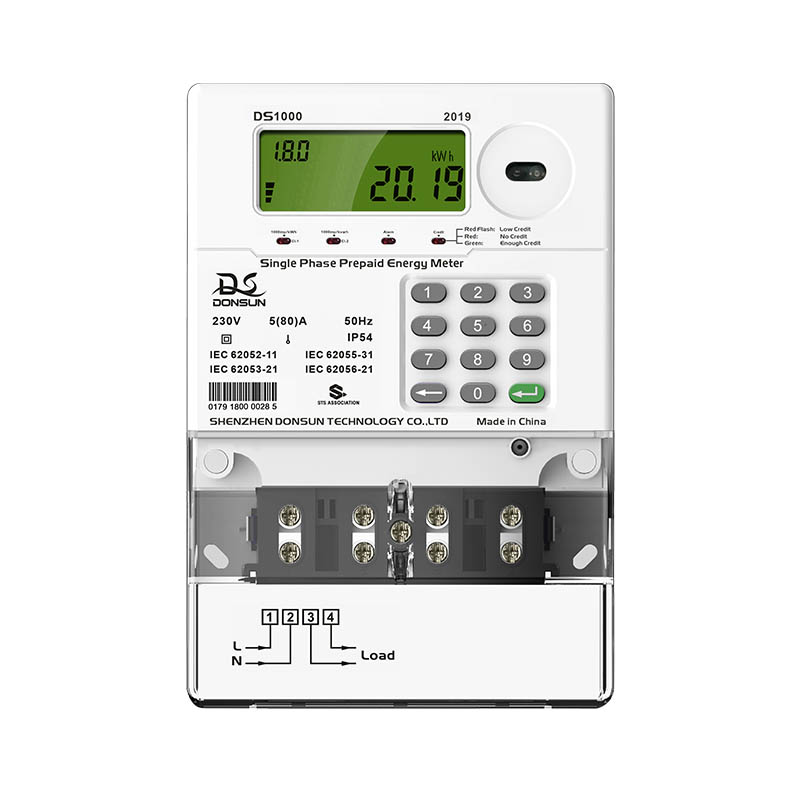- Español
- Português
- русский
- Français
- 日本語
- Deutsch
- tiếng Việt
- Italiano
- Nederlands
- ภาษาไทย
- Polski
- 한국어
- Svenska
- magyar
- Malay
- বাংলা ভাষার
- Dansk
- Suomi
- हिन्दी
- Pilipino
- Türkçe
- Gaeilge
- العربية
- Indonesia
- Norsk
- تمل
- český
- ελληνικά
- український
- Javanese
- فارسی
- தமிழ்
- తెలుగు
- नेपाली
- Burmese
- български
- ລາວ
- Latine
- Қазақша
- Euskal
- Azərbaycan
- Slovenský jazyk
- Македонски
- Lietuvos
- Eesti Keel
- Română
- Slovenski
- मराठी
- Srpski језик
How a Single Phase Smart Energy Meter Works
2022-01-19
When using a single-phase electric energy meter, first, when the electric energy meter is contacted with the circuit under test, the voltage on the north side circuit will be loaded on the voltage coil, and the current in the current under test will flow through the current coil after starting. Two alternating magnetic fields will be generated and also pass through the green disk on the monophasic meter. These two magnetic fields are the same in time, so they can cause eddy currents on the green disk of the electric energy meter. We all know that the magnetic flux and the eddy current will interact with each other after they meet, and generate rotational torque, etc., so that the aluminum disk will rotate, and the magnetic flux of the magnet will also brake and pass through the aluminum disk. Wait until the aluminum disk After rotating, the magnetic flux is cut off, because after the magnetic flux is cut off, the current can be directly induced on the aluminum disc. After the current and the magnetism of the braking magnet interact with each other, they will interact with the aluminum disc A braking torque in the opposite direction is generated, and the speed of the aluminum disc will be uniform.
However, because the magnetic flux and the voltage and current in the circuit have formed a certain proportion, after the aluminum plate is rotated, the electric energy consumed in the circuit will form a certain proportion. When working, the larger the load strategy is, the faster the speed of the aluminum plate will be correspondingly, and the faster the aluminum plate rotates, then after passing through the worm drive counter, the counter will automatically accumulate the actual consumption in the circuit. electrical energy.
Single-phase electric energy meters are generally used to test the electric energy of the line when they are used to measure single-phase lines, such as those capable of measuring three-phase four-wire lines, but they must use three-element and three-phase electric energy when testing. If you want to measure the electric energy of a three-phase three-wire line, the equipment used is a two-element three-phase watt-hour meter, but whether it is a single-phase watt-hour meter or a three-phase watt-hour meter, the working principles of each other are mostly the same. It is the same, the difference is only the number of units and the difference between the components in the structure of the electric energy meter, which is not difficult to understand.
Use in life The above single-item active watt-hour meter is also divided into two forms, one is called a direct-type watt-hour meter, and the other is called a wiring watt-hour meter through a transformer. Among these two types, the direct-type watt-hour meter is also It can be divided into two types: jump-in watt-hour meter and forward-type watt-hour meter. During installation, the rated voltage of the watt-hour meter and the connected power supply should be consistent, and the rated current should also be equal to or greater than Load current, single-stranded insulated copper wire should also be used when linking, and the cross section should also meet the use of load current. There is no way to connect the phase line and the neutral line, and the neutral line must also enter the energy meter.




